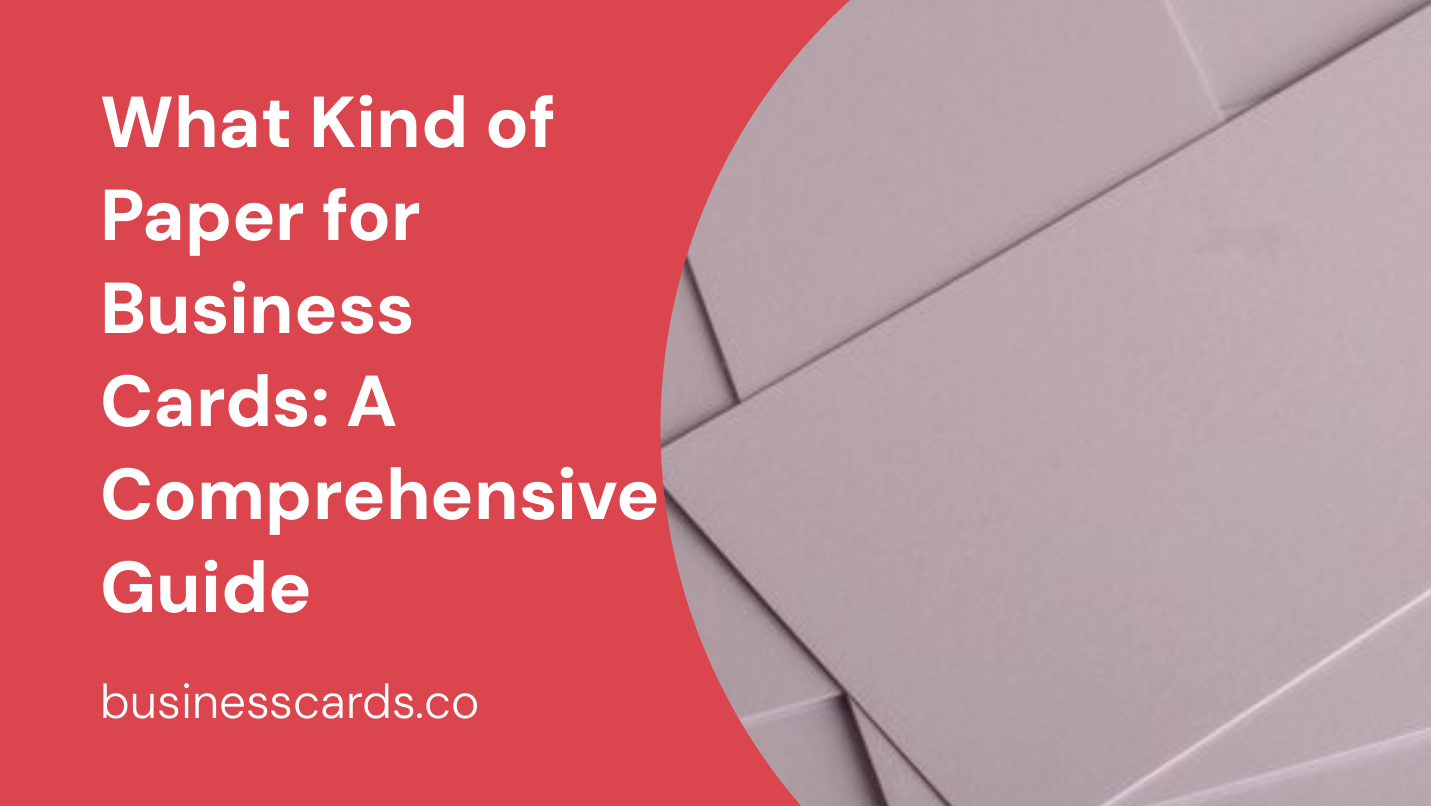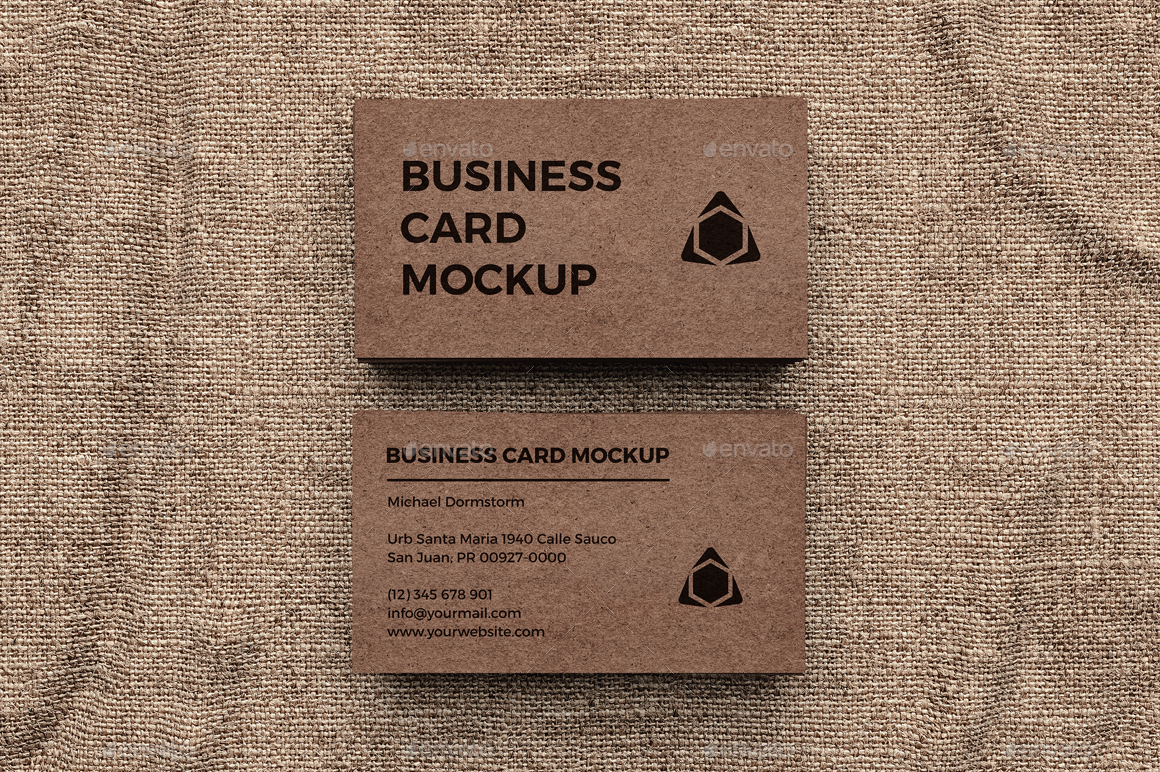
In the realm of professional networking, business cards play a significant role. They serve as a tangible representation of your personal brand, conveying vital information to potential clients, customers, and contacts. While the design and content of your business card are crucial, the choice of paper can also make a lasting impression. With a plethora of options available, it can be overwhelming to determine the most suitable paper for your business cards. This comprehensive guide explores different paper types and helps you make an informed decision.
Types of Business Card Paper

1. Coated Paper
Coated paper is a popular choice for business cards due to its smooth and glossy finish. This type of paper is often coated with a thin layer of clay or chemical compounds to enhance its appearance and durability. The glossy finish adds a professional touch, making the business card visually appealing. Coated paper is resistant to smudging and can withstand wear and tear, ensuring that your business cards look pristine for a longer period.
2. Uncoated Paper
Uncoated paper, as the name suggests, lacks the glossy coating found in coated paper. It offers a natural texture and a matte finish, giving your business cards a more distinctive and tactile feel. The absence of a coating makes it easier to write on the card using pens or markers, which can be advantageous if you need to add additional information such as appointment details or a personalized note.
3. Recycled Paper
For environmentally conscious individuals or businesses, recycled paper offers an eco-friendly alternative for business cards. This type of paper is made from post-consumer waste or recycled fibers, reducing the need for raw materials and minimizing environmental impact. Recycled paper can come in both coated and uncoated varieties, allowing you to choose the finish that aligns with your brand image.
4. Linen Paper
Linen paper, characterized by its textured surface resembling linen fabric, adds a touch of elegance and sophistication to your business cards. The unique texture sets it apart from other paper types and gives your cards a premium look and feel. Linen paper is often chosen by professionals in industries such as law, finance, or luxury brands to convey a sense of class and refinement.
5. Kraft Paper
For those seeking a rustic or vintage aesthetic, kraft paper serves as an excellent choice for business cards. Made from recycled wood pulp, kraft paper has a natural brown color and a rough texture, which adds a unique charm to your cards. While kraft paper might not offer the same level of durability as coated or linen paper, it can be an effective way to showcase your brand’s personality and authenticity.
Factors to Consider

When selecting the right paper for your business cards, several factors come into play. It’s important to consider the impression you want to leave on recipients, the longevity and durability of the cards, and how well the paper complements your branding.
1. Brand Image and Design
The choice of paper for your business cards should align with your brand image and design. Consider the message you want to convey and the industry you operate in. For example, if you’re part of a creative industry, such as graphic design or marketing, you may want to experiment with unconventional paper types to stand out from the competition. On the other hand, more traditional industries may opt for classic coated or uncoated paper for a professional yet timeless appeal.
2. Thickness and Durability
The thickness of the paper, measured in grams per square meter (GSM), is an important consideration for business cards. Thicker paper tends to feel more substantial and can withstand daily handling and potential damage, increasing the longevity of your cards. Lighter-weight paper may be more budget-friendly, but it might not make the same impression or hold up as well over time.
3. Printing Techniques
Different paper types interact with printing techniques in distinct ways. Coated paper tends to result in sharper, more vibrant prints, making it ideal for colorful designs or photographs. Conversely, uncoated paper may absorb ink differently, resulting in a softer, more subdued appearance. Consider your design and printing requirements when choosing the paper type to ensure the final result meets your expectations.
4. Paper Availability and Cost
Availability and cost are practical considerations when choosing the paper for your business cards. Some specialty paper types may be harder to find or come at a higher price point, impacting your overall budget. Additionally, if you plan to print business cards in large quantities, it’s essential to consider the cost implications of your chosen paper type. Strike a balance between quality, availability, and cost-effectiveness to make an informed decision.
Making Your Decision
Now that you’re aware of the various types of paper available for business cards and the key factors to consider, it’s time to make your decision. Carefully evaluate your brand image, design preferences, desired durability, and printing requirements. With the plethora of options at your disposal, select the paper type that best reflects your brand, leaves a lasting impression, and aligns with your budget.
In conclusion, the choice of paper for your business cards plays an influential role in shaping recipients’ perception of your brand. Whether it’s the smooth and glossy finish of coated paper, the natural texture of uncoated paper, or the eco-friendly appeal of recycled paper, each option offers its own unique advantages. Pair your design with the appropriate paper type to create business cards that showcase your professionalism, stand out from the crowd, and leave a lasting positive impression.
Ethan is a branding enthusiast and a master of storytelling. With a background in advertising, he leverages his expertise to explore the art of graphic design and its impact on business. In his free time, Ethan enjoys photography and capturing the world’s visual intricacies.